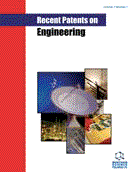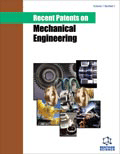Abstract
Umbilical cord blood (UCB) is an increasingly important and rich source of stem cells. These cells can be used for the treatment of many deadly diseases, including cancers, immune and genetic disorders. It also provides a readily available source of stem cells for transplantation purposes. In this paper, we review the literature published that reflects the designs of UCB collection apparatus in order to obtain stem cells.
Keywords: Placenta, umbilical cord blood collection, stem cells
Recent Patents on Engineering
Title: Devices for Umbilical Cord Blood Collection
Volume: 1 Issue: 1
Author(s): Kok K. Tan, Kok Z. Tang and Sunan Huang
Affiliation:
Keywords: Placenta, umbilical cord blood collection, stem cells
Abstract: Umbilical cord blood (UCB) is an increasingly important and rich source of stem cells. These cells can be used for the treatment of many deadly diseases, including cancers, immune and genetic disorders. It also provides a readily available source of stem cells for transplantation purposes. In this paper, we review the literature published that reflects the designs of UCB collection apparatus in order to obtain stem cells.
Export Options
About this article
Cite this article as:
Tan K. Kok, Tang Z. Kok and Huang Sunan, Devices for Umbilical Cord Blood Collection, Recent Patents on Engineering 2007; 1 (1) . https://dx.doi.org/10.2174/187221207779814734
| DOI https://dx.doi.org/10.2174/187221207779814734 |
Print ISSN 1872-2121 |
| Publisher Name Bentham Science Publisher |
Online ISSN 2212-4047 |
 10
10
- Author Guidelines
- Bentham Author Support Services (BASS)
- Graphical Abstracts
- Fabricating and Stating False Information
- Research Misconduct
- Post Publication Discussions and Corrections
- Publishing Ethics and Rectitude
- Increase Visibility of Your Article
- Archiving Policies
- Peer Review Workflow
- Order Your Article Before Print
- Promote Your Article
- Manuscript Transfer Facility
- Editorial Policies
- Allegations from Whistleblowers
- Announcements
Related Articles
-
Headache in Multiple Sclerosis - Pharmacological Aspects
Current Pharmaceutical Design Bilirubin and the Genome: The Hereditary Basis of Unconjugated Neonatal Hyperbilirubinemia
Current Pharmacogenomics Hypersensitivity to Antineoplastic Agents
Current Pharmaceutical Design Adrenomedullin Function in Vascular Endothelial Cells: Insights from Genetic Mouse Models
Current Hypertension Reviews Liver Stem Cells and Possible Clinical Applications
Current Stem Cell Research & Therapy Repurposed Drugs in Metabolic Disorders
Current Topics in Medicinal Chemistry Gender Disparity in Pediatric Diseases
Current Molecular Medicine Branched-chain Amino Acid Oxidation in Skeletal Muscle – Physiological and Clinical Importance of its Modulation by Reactant Availability
Current Nutrition & Food Science Roles of Chemokine CXCL12 and its Receptors in Ischemic Stroke
Current Drug Targets Emerging Drugs and Indications for Cardio-Metabolic Disorders in People with Severe Mental Illness
Current Pharmaceutical Design Endocannabinoid System in Neurological Disorders
Recent Patents on CNS Drug Discovery (Discontinued) Procarbazine – A Traditional Drug in the Treatment of Malignant Gliomas
Current Medicinal Chemistry New Chemotherapy and Immunotherapy for Tuberculosis
Current Respiratory Medicine Reviews Modern Perspectives on the Structure, Function and Evolution of the Relaxin-Like Peptides and their Receptors
Current Medicinal Chemistry - Immunology, Endocrine & Metabolic Agents Gene Transfer to the Central Nervous System: Current State of the Art of the Viral Vectors
Current Genomics Recent Patents, Formulation and Characterization of Nanoliposomes
Recent Patents on Drug Delivery & Formulation Phenylalanine Hydroxylase Misfolding and Pharmacological Chaperones
Current Topics in Medicinal Chemistry Application of Pharmacogenomic Approaches in the Study of Drug Response in Complex Diseases
Current Pharmacogenomics Pharmacogenomic Considerations in the Treatment of the Pediatric Cardiomyopathy Called Barth Syndrome
Recent Patents on Biotechnology Inhibition of Angiogenesis as a Treatment Strategy for Neuroblastoma
Current Cancer Therapy Reviews





















